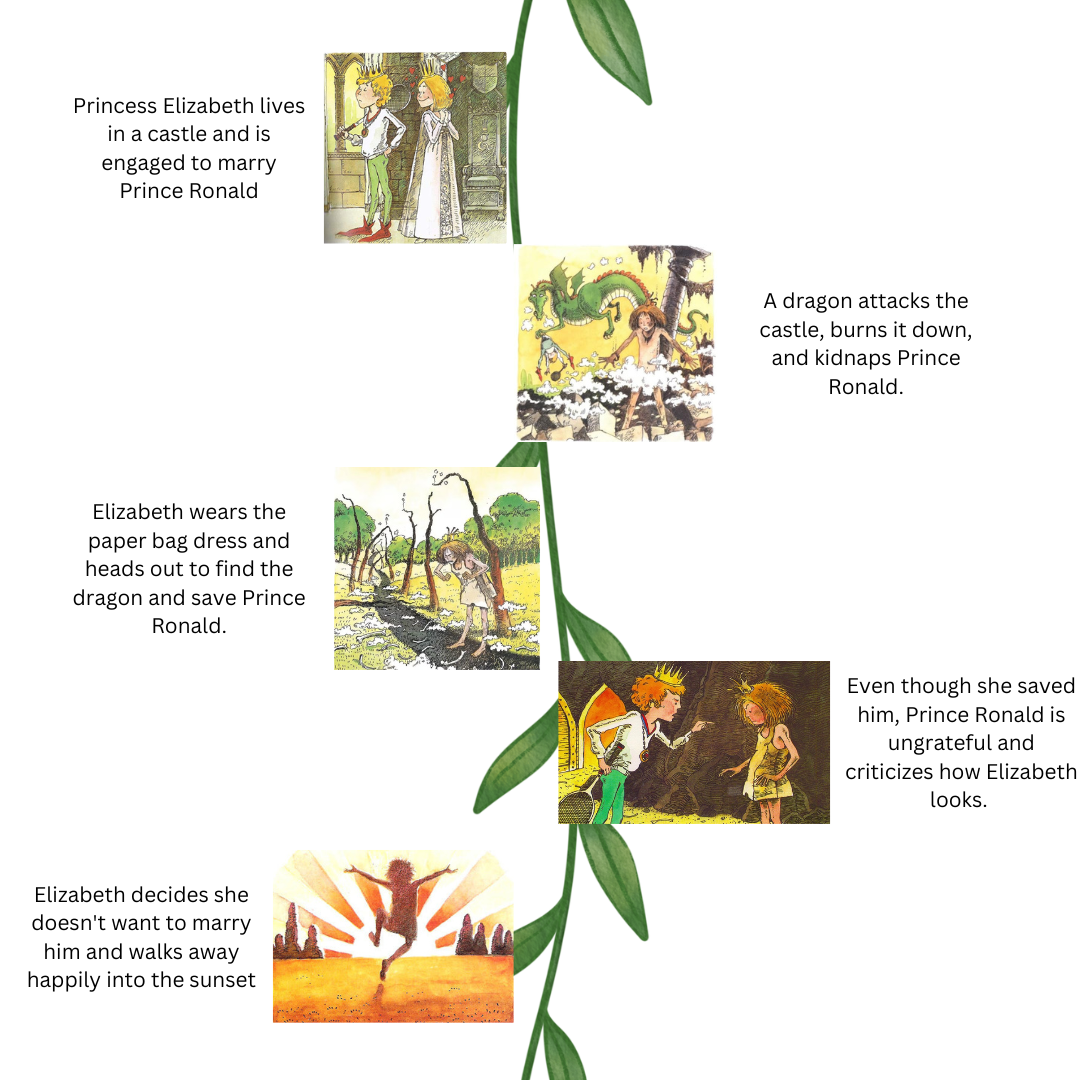Story Vines

Story vines are a creative tool used to enhance students’ reading skills. Story vines are created by braiding a yarn into a long strand, then attaching artifacts, drawings, or quotes from a story to the vine. Students can then use this story vine as a visual representation of their re-telling of the story.

By re-telling traditional stories, such as The Paperbag Princess by Robert Munsch, “students develop an understanding of story and sequence, learn new vocabulary, link visual imagery with reading, and develop fluency in reading and talking.” (Bright, 2021, p. 91).


One of the expected learning outcomes listed in the BC Curriculum is reading strategies, including re-telling a story in your own words and locating the main idea and details. Creating visual representations of stories through story vines prompts students to engage in summarizing and re-telling of stories. Selecting artifacts, drawings, and quotes to represent specific points in the plot prompts them to identify main ideas and details.

Re-telling stories using the story vine also encourages students to have conversations about the story, fostering a deeper understanding of it. By sharing their story vines with classmates, students are also strengthening their abilities to communicate main ideas and details, fulfilling the learning outcomes in the BC Curriculum for reading strategies.

Although story vines were originally an African tradition, the oral storytelling processes it encourages gives teachers an opportunity to bring Indigenous perspectives into the classroom.
I was looking into some ways to use story vines in the classroom when I came across an article talking about a workshop using story vines in Winnipeg. The workshop, ran by Renee McGurry (Indigenous artist and educator), taught teachers in Winnipeg how to use story vines as a way to bring Indigenous culture into their classrooms.

In the workshop, the teachers were given the Cree flood and creation story, as well as a variety of art supplies to create their story vines.
They created their vines and attached their artifacts, representing the major elements of the story. Re-telling the story in this fashion allows the “storyteller to relate the story orally from memory,” using the artifacts on the vine to find the major elements of the story.

“That’s how information and knowledge and teachings were passed down … orally. So I thought this was a perfect way of sharing stories like that — the great flood or the creation stories — using the vines as a way of doing that.”
Renee McGurry


